We will be undertaking a 21-day field project off Hawai‘i Island starting November 14, 2014. This project is funded by the NOAA Fisheries Bycatch Reduction Engineering Program (BREP) and is focused primarily on false killer whales. Our primary goal for the field effort is to find and deploy LIMPET satellite tags on pelagic false killer whales, to be able to assess their movements over time as they relate to longline fishing effort, to help inform best fishing practices in ways that might not only reduce bycatch but also depredation of catch. Like all of our field projects though, we will work with most species we encounter. We have funding from Dolphin Quest for LIMPET satellite tags that we hope to deploy on some of the rarer species of odontocetes in Hawaiian waters (e.g., melon-headed whales, killer whales, sperm whales) to track their movements and behavior, and from the Pacific Islands Fisheries Science Center for satellite tags to help determine whether species like short-finned pilot whales and Blainville’s beaked whales change their movements or diving patterns in response to El Niño. Since we’ll be trying to work further offshore than usual, to increase our chances of encountering pelagic false killer whales, we are more likely to be able to work with some of the pelagic populations that pass by the islands.
The research crew for this project will include Daniel Webster, Brenda Rone, Annie Gorgone and Robin Baird, all from Cascadia, Sarah Ashworth of the University of Southern Mississippi’s Gulf Coast Research Laboratory, as well as a number of volunteers.
If you want some background information on our work in Hawai‘i we published a paper on our first 13 years of surveys and a pdf is available here
End of field project update
December 4th was our last day on the water. The last week of the project was much more productive than the first week – in the last 7 days we had 25 sightings (of 5 species) and deployed 7 satellite tags, while in the first week we had 10 sightings (of 4 species) and deployed 2 satellite tags. So a good end to the trip – overall we had 55 encounters of 10 species of odontocetes, and deployed 13 satellite tags (9 of them depth-transmitting tags) on 4 species.
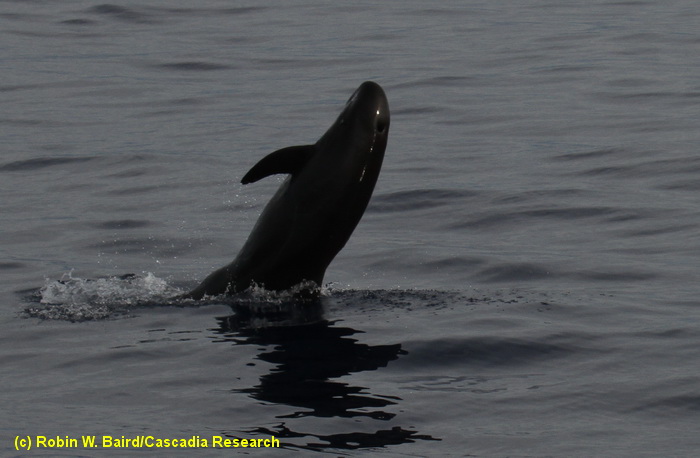
A pygmy killer whale leaping, December 4, 2014. Photo (c) Robin W. Baird. On December 3rd we encountered our 10th species of odontocete for the trip, a group of pygmy killer whales, and on the 4th we encountered a different group of the same species. We recognized a number of individuals from December 3rd – they are part of the long-term resident population, whereas the individuals on the 4th weren’t immediately recognized, and we will be comparing all to our photo-identification catalog to determine whether they’ve been previously documented in the islands.
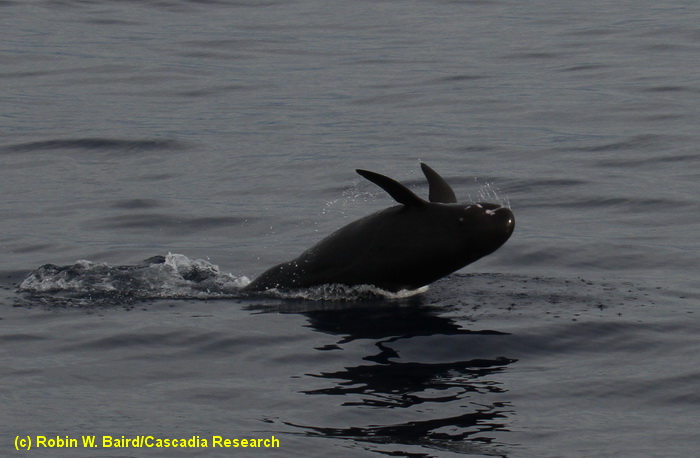
A pygmy killer whale leaping, December 4, 2014. Photo (c) Robin W. Baird. For more information on pygmy killer whales see our web page for this species.
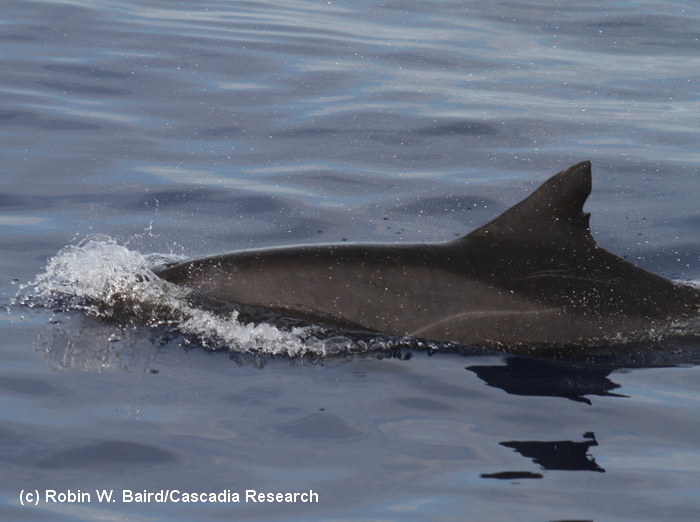
A very distinctive pygmy killer whale, December 4, 2014. Photo (c) Robin W. Baird

On December 4th we also re-deployed the “HARP” (High-frequency Acoustic Recording Package) as part of a long-term acoustic monitoring project being undertaken by the Pacific Islands Fisheries Science Center.
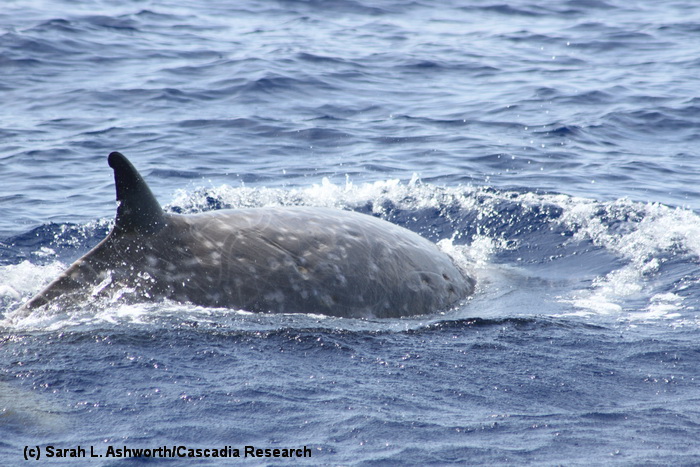
An adult male Cuvier’s beaked whale, December 2, 2014. Photo (c) Sarah L. Ashworth. This individual (HIZc008 in our photo-ID catalog) we recognized in the field based on the distinct notch in the dorsal fin – he was last seen off Kona during our May 2008 project. For more information on Cuvier’s beaked whales in Hawaiian waters see our web page for this species
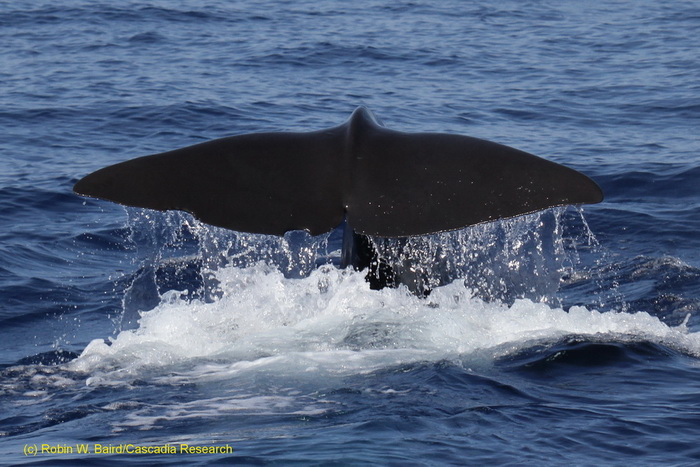
A sperm whale fluking, December 2, 2014. Photo (c) Robin W. Baird. The sperm whales we satellite tagged on November 30th came back up the west side of the island and we were able to get identification photos of a number of the individuals present.
November 30th update
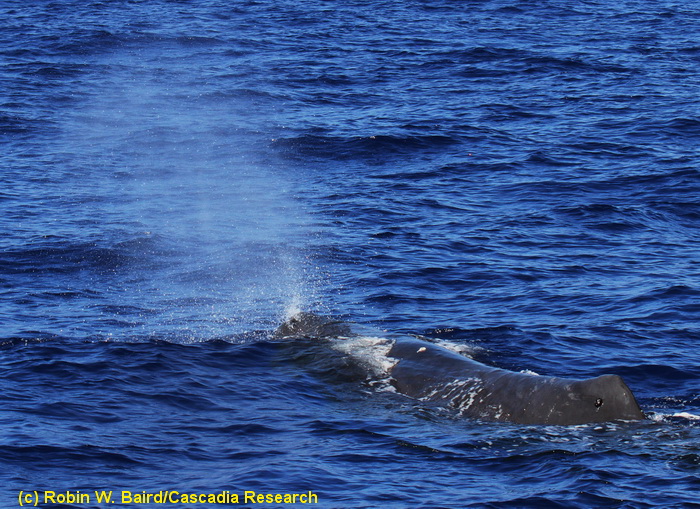
Another day with sperm whales off Kona – today we encountered a group of about 14 sperm whales spread over a large area of the Kona coast, with at least 15 kilometers between the furthest spread individuals. We were able to deploy depth-transmitting satellite tags on two individuals (a tag is visible in this photo, the dark object on the side of the dorsal fin – photo (c) Robin W. Baird).

A sperm whale tail fluke – we were able to obtain identfication photos of a number of individuals present, including both fluke photos as well as dorsal fin photos. Photo (c) Robin W. Baird
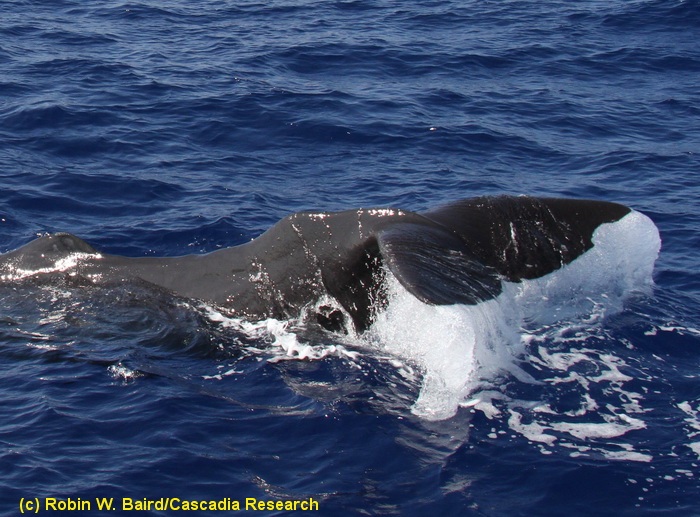
One of the whales we encountered, a juvenile, was very curious about the boat, approaching us and rolling over at the surface next to the boat. Photo (c) Robin W. Baird.
November 29th update
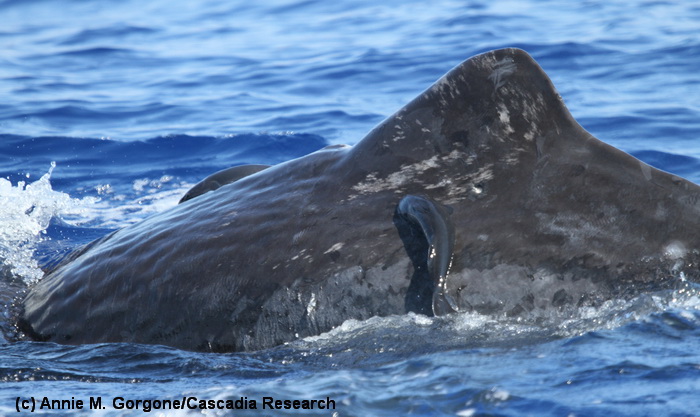
Today we encountered our 9th species of odontocete for the trip, a dispersed group of about 20 sperm whales. Sperm whales in Hawaiian waters are not thought to be resident to the islands, but instead are part of an open-ocean population that moves by the islands. This individual has several remoras attached – photo (c) Annie M. Gorgone.
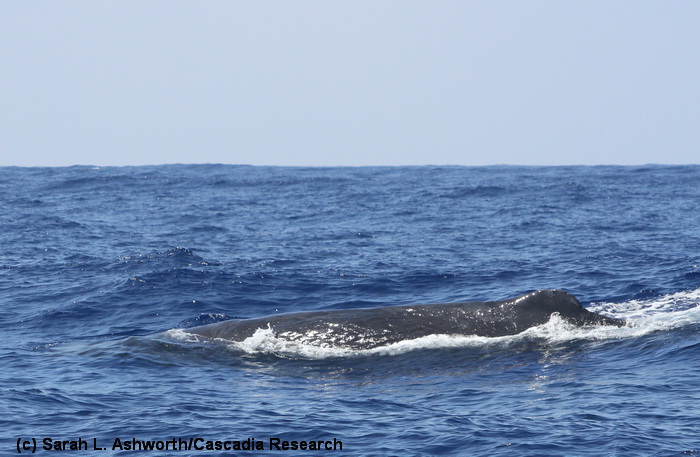
Sperm whale off south Kona, November 29, 2014. Photo (c) Sarah L. Ashworth.
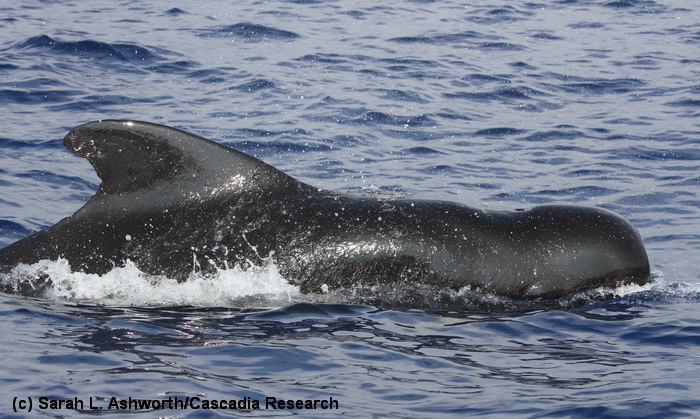
Short-finned pilot whale, November 29, 2014. Photo (c) Sarah L. Ashworth. We also encountered our fourth social group of pilot whales for the trip, and deployed two satellite tags (one depth-transmitting and one location-only) to track their movements and behavior.
November 27th update

Today we encountered our 8th species of odontocete for the trip, a group of six dwarf sperm whales – three mother/calf pairs. There is a resident population of this species that lives along the west side of the island, and we will compare the photos to our photo-ID catalog, to determine whether any of the individuals are already known. Photo (c) Brenda K. Rone
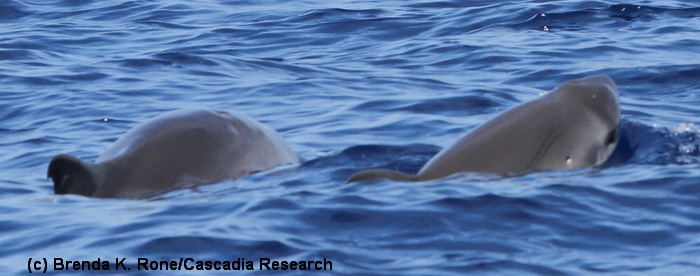
A pair of dwarf sperm whales, with the eye visible on one individual. Photo (c) Brenda K. Rone.
November 24th update

Today we encountered our 7th species of odontocete for the trip, rough-toothed dolphins. We encountered two different groups and were able to photography most of the individuals present – we have a photo-identification catalog of this species and will be using the photographs to examine inter-island movements and social organization.
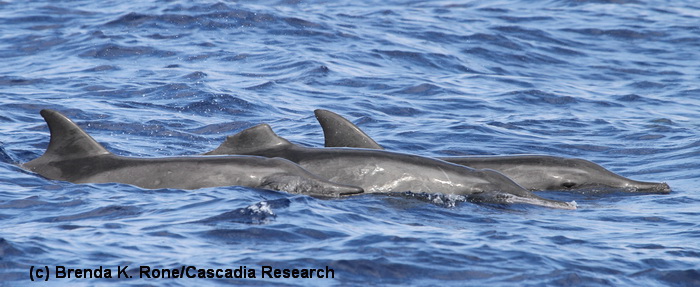
Rough-toothed dolphins, November 24, 2014. Photo (c) Brenda K. Rone. One of the individuals encountered today is missing the top half of the dorsal fin – this type of injury is typically caused by a line cutting through the fin.
November 23rd update
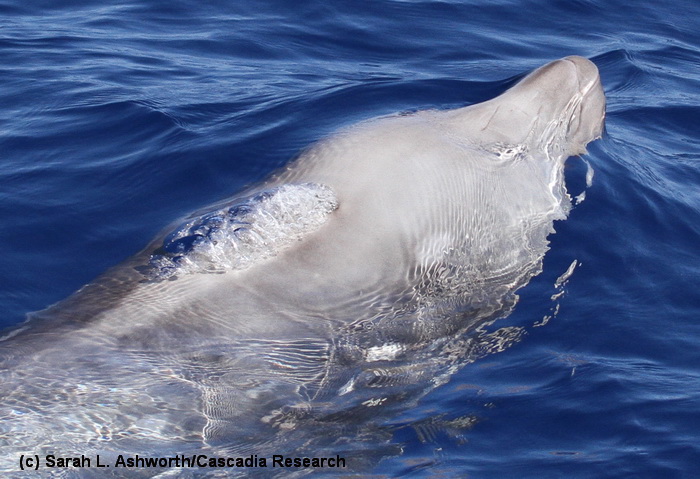
A female or sub-adult Cuvier’s beaked whale surfacing, November 23, 2014. Photo (c) Sarah L. Ashworth. Today was our most productive day of the trip so far – we encountered a lone Cuvier’s beaked whale, and were able to deploy a depth-transmitting satellite tag to track it’s movement and behavior.
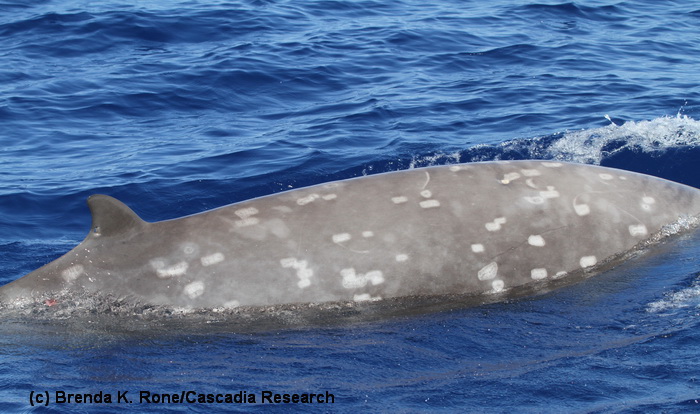
A Cuvier’s beaked whale, November 23, 2014. Photo (c) Brenda K. Rone.
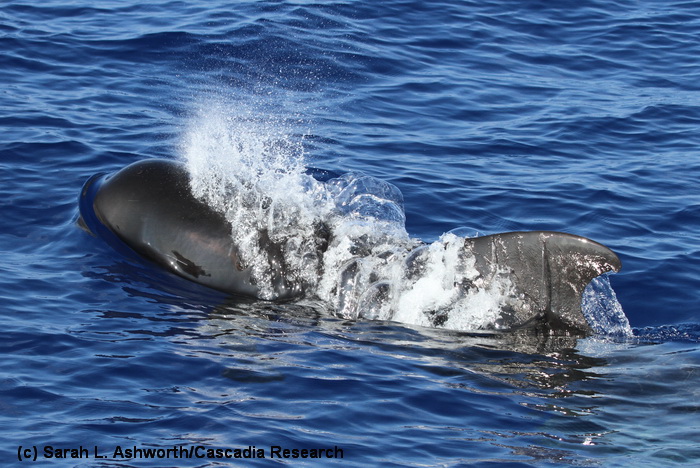
Short-finned pilot whale, November 23, 2014. Photo (c) Sarah L. Ashworth. We also encountered a dispersed group of pilot whales, and deployed three satellite tags, two depth-transmitting tags and a location-only tag.
November 22nd update
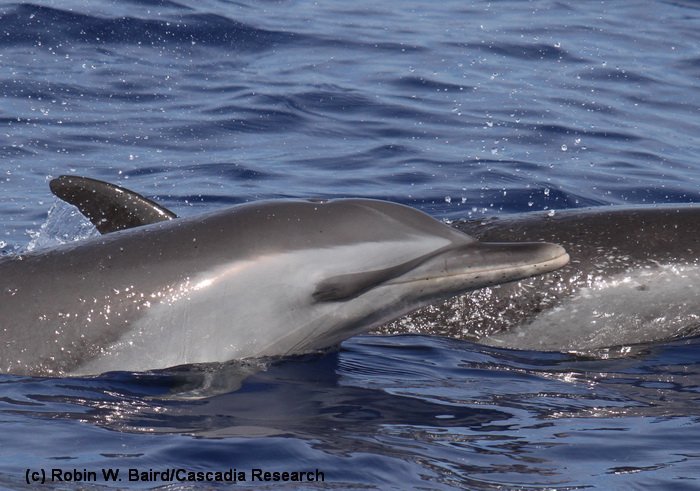
A juvenile pantropical spotted dolphin, November 22, 2014, photo (c) Robin W. Baird. Our sighting rates have increased in the last two days – today we had a group of pantropical spotted dolphins and our sixth species of odontocete for the trip, a group of four bottlenose dolphins.
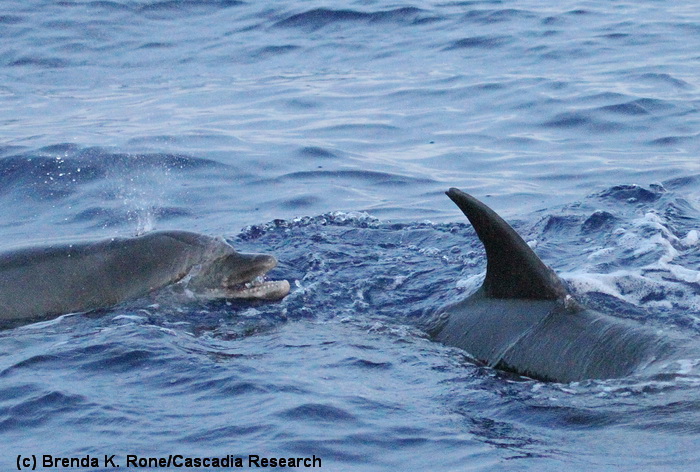
A bottlenose dolphin with it’s mouth open, socializing with another bottlenose, November 22, 2014, photo (c) Brenda K. Rone. We took photos of the four bottlenose through our catalog and found matches to two individuals, both previously documented off the island.
November 21st update
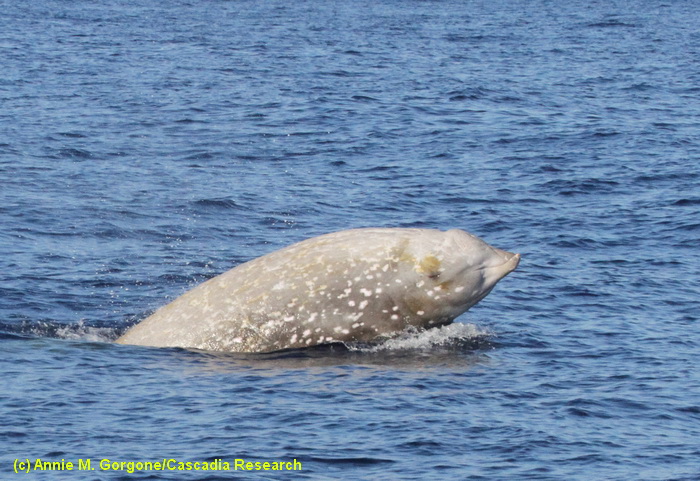
A good day on the water. First we encountered a group of three Cuvier’s beaked whales, and were able to get good identification photos of all three individuals. This is an adult male – the group contained two adult males and one adult female – a quick comparison of the photos to our catalog revealed matches for the female and one of the adult males – the male has only been documented once before, during one of our field projects in November 2004.

An adult female Cuvier’s beaked whale, November 21, 2014. Photo (c) Brenda K. Rone. This female is HIZc007 in our photo-ID catalog, first documented off the island on August 31, 2004, and seen 10 times prior to today, with our last sighting October 21, 2013.
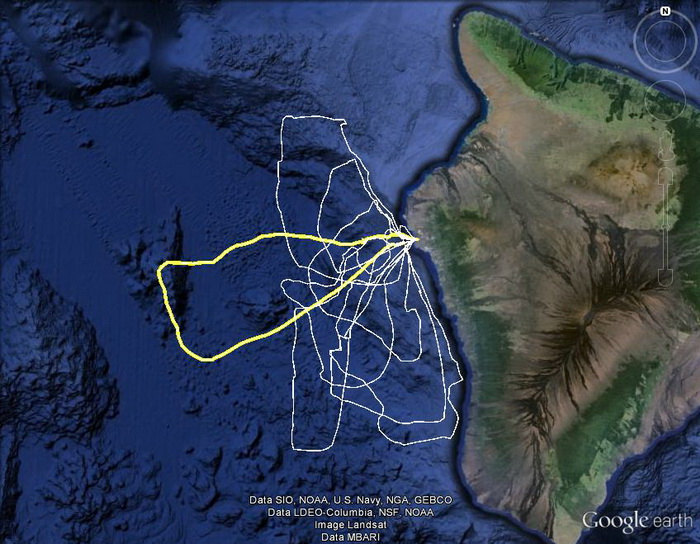
Tracklines from our first eight days of effort – today’s trackline is in yellow. Today we made it far offshore, to Indianapolis Seamount, the closest seamount to the Kona coast. Today’s excursion was made on an 11-m rigid-hulled inflatable operated by Wild Hawaii Ocean Adventures, allowing us to quickly get offshore.
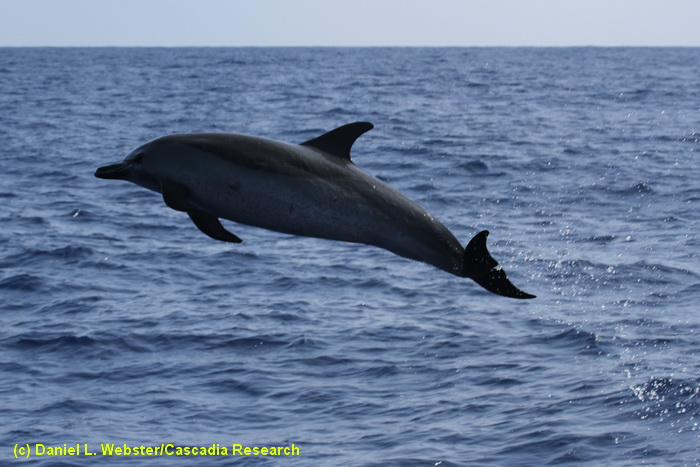
A pantropical spotted dolphin leaping, November 21, 2014. Photo (c) Daniel L. Webster. We also encountered three groups of spotted dolphins – giving us hope that sighting rates might be returning to normal after a very quiet first week!
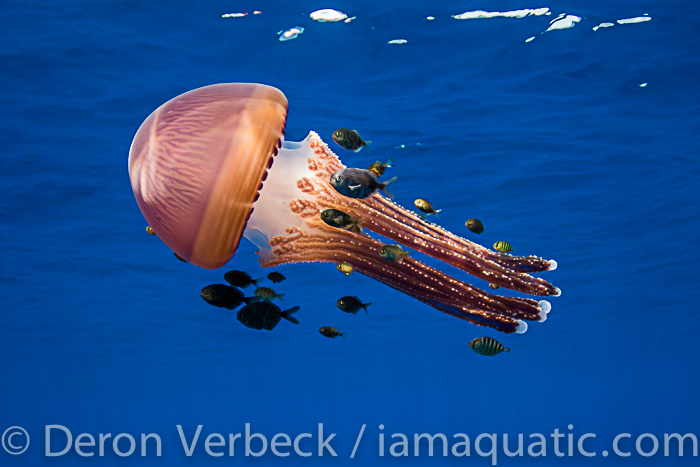
We also encountered a relatively rare species of jelly, Thysanostoma loriferum – photo (c) Deron Verbeck
November 20th update

It has been a slow start to the trip, with just nine sightings of four species in the first seven days on the water – normally after the first week, covering 1,025 kilometers of trackline, we should have seen at least twice as many species and have had about three times the number of encounters. Today we collect our third squid – all the squid we collect are sent to be identified by Bill Walker at the National Marine Mammal Laboratory in Seattle. Since 2006 we’ve collected over 100 squid off the island, representing more than 25 species. Photo (c) Robin W. Baird
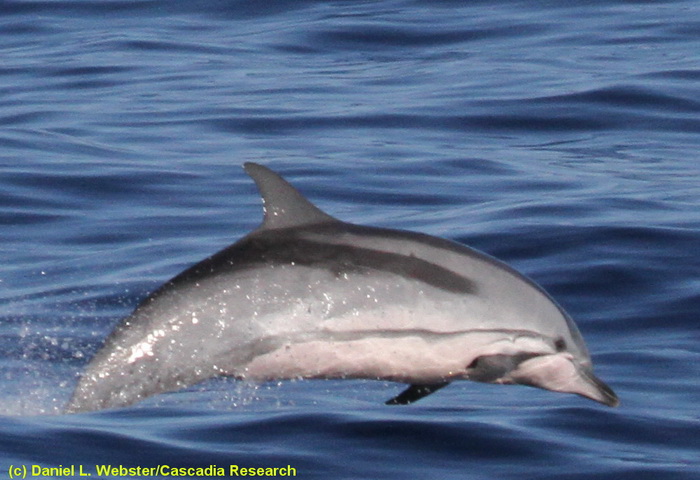
A striped dolphin, November 17, 2014. Photo (c) Daniel L. Webster. We encountered groups of striped dolphins on both November 17th and 18th – this is a rarely-seen species – our last sighting in Hawai‘i was in May 2012. Striped dolphins are one of the non-resident species we see – they are likely part of an open-ocean population that pass by the islands.

Short-finned pilot whales, November 16, 2014. Photo (c) Sarah Ashworth. We encountered two groups of pilot whales on November 16th, a pair of males, and a group of about 20 individuals. We were able to photo-identify both of the males and most of the group of 20, and matched them to our catalog, recognizing most of the individuals present. We deployed one satellite tag to track their movements.
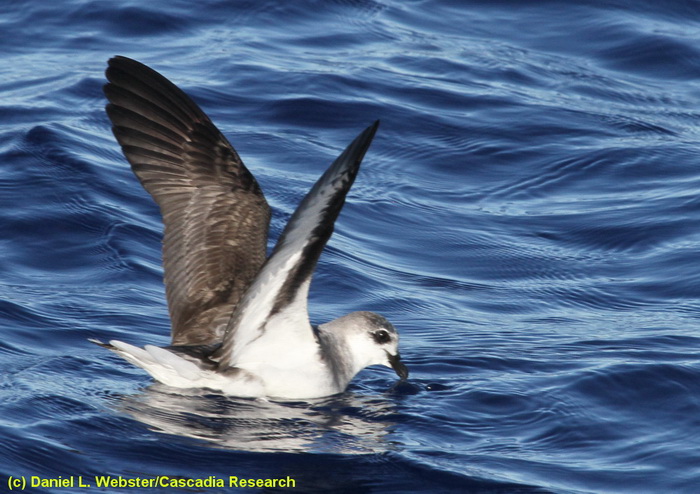
A Black-winged Petrel, November 16, 2014. Photo (c) Daniel L. Webster. The first few days of the trip were very good days for seabirds, including sightings of at least four different species of petrels. We take photos of as many petrels (and other rare or unusual) seabirds and send them to Peter Pyle from the Institute for Bird Populations for identification.

A Juan Fernandez Petrel, November 14, 2014. Photo (c) Daniel L. Webster
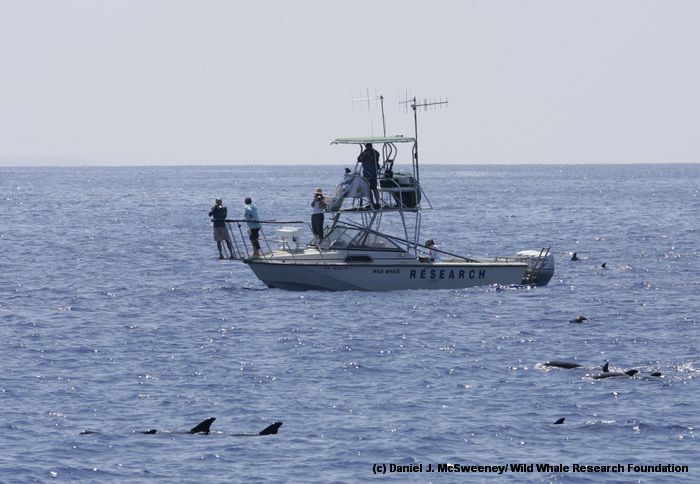
The R/V Wild Whale, a 27′ Boston Whaler, our primary research vessel, with a group of melon-headed whales off Kona, October 19, 2011. Photo (c) Dan McSweeney.
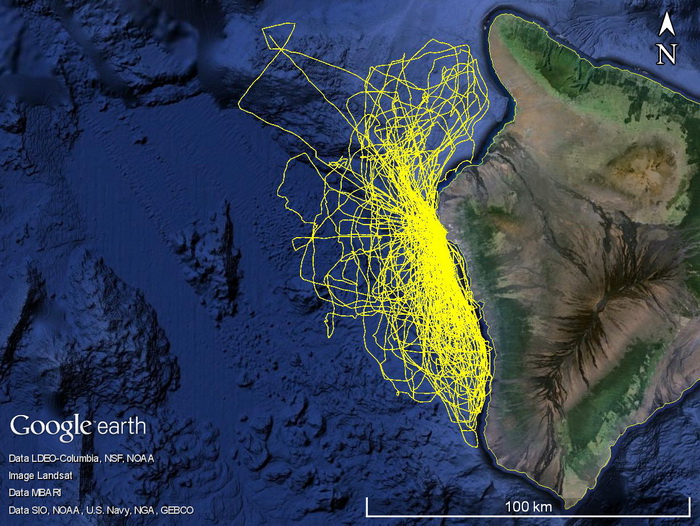
This map shows all our previous effort off the island of Hawai‘i during the months of November and December – we’ve worked off Kona in these months in a number of different years (2013, 2011, 2010, 2009, 2008, 2006).
All photos are copyrighted and should not be used without permission (contact Robin Baird at rwbaird (at) cascadiaresearch.org for permission).
Like us on Facebook page if you want to receive notices of when information is posted and updates on other Cascadia projects.